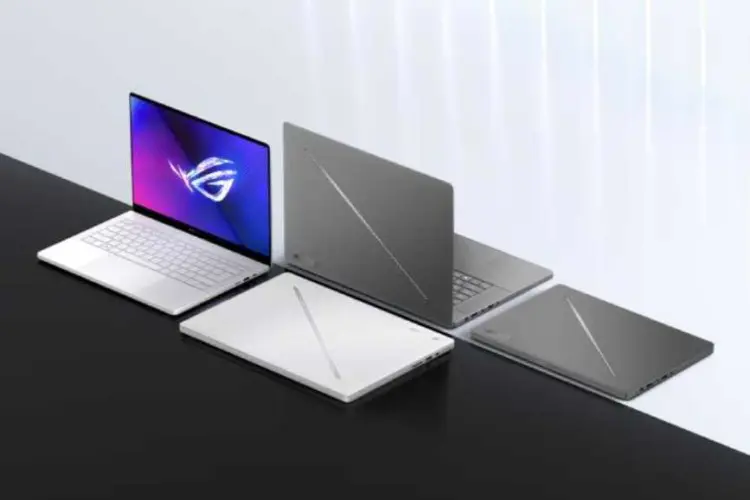
12 Signs Your Gaming Laptop Needs Professional Laptop Repair
12 Clear Signs Your Gaming Laptop Needs Repair (Before It Gets Worse) Gaming laptops are built for speed and heavy workloads. But even top-tier machines
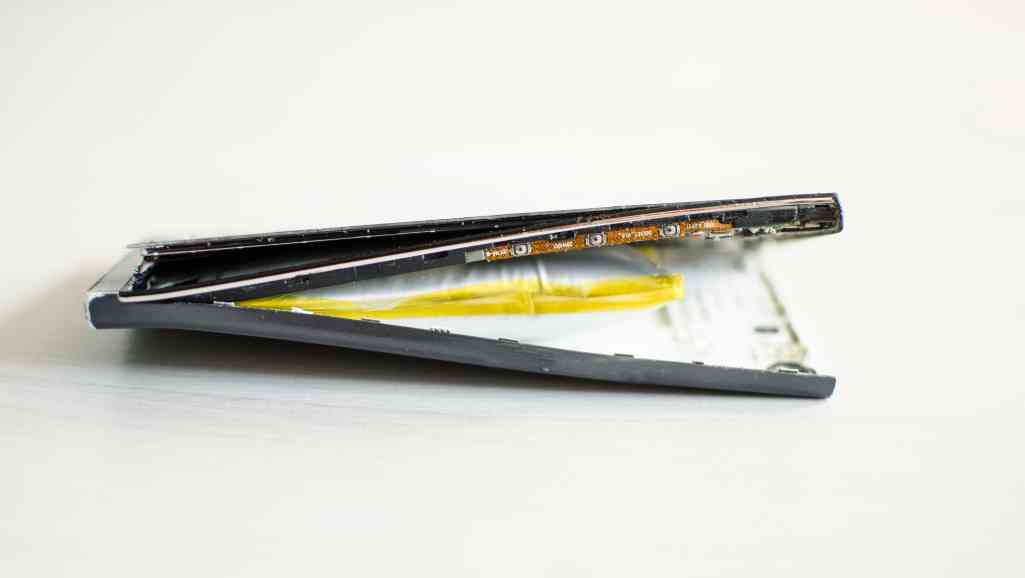
Imagine this: you’re mid-way through a critical task when suddenly, your laptop gasps its last breath of power. Indeed, the health of your laptop’s battery is pivotal, yet it often goes unchecked until it’s too late. Now, consider the phenomenon of a bloated battery—a condition that’s as serious as it sounds, yet not always understood.
In this post, we’ll navigate the signs of a bloated battery, delve into its causes, and offer practical advice for dealing with this issue. So, let’s embark on this journey together, ensuring that your laptop remains a reliable companion rather than a cause for concern.
Table of Content:
Swollen laptop batteries are ticking time bombs in plain sight. They’re not just a nuisance; they’re a hazard. Let’s dive into what causes this swelling. Energy density and heat are the primary culprits, as PCMag explains. Essentially, too much current flows in an uncontrolled manner within the battery cells. This leads to gas and heat build-up.
They power laptops for hours and even drive electric vehicles. Yet, they have their limits. As we push our devices harder and for longer, the batteries bear the brunt. This stress can lead to swelling, as detailed by sources like Pigtou.
Overcharging a laptop battery or exposing it to high temperatures can cause it to bulge. This heat triggers a chemical reaction that deforms the battery. It’s a clear sign that something’s amiss.
A fall or a hard knock can damage the battery. Even a flawed manufacturing process can lead to a build-up of gases within the battery. This can cause the battery to expand over time.
You might see a protruding keyboard or a laptop that rocks on a flat surface. These are red flags. They signal that the battery is changing shape and needs attention.
It poses risks to your health and safety. Handling a swollen battery requires care. Avoid poking or prodding it, as this can lead to dangerous outcomes.
Lastly, prevention is key. Proper care and usage can keep battery swelling at bay. Always monitor your device’s temperature and charging habits. This vigilance can extend your battery’s life and keep you safe.
In conclusion, understanding battery swelling is crucial. Recognize the signs and take action. Your laptop—and your safety—depend on it.
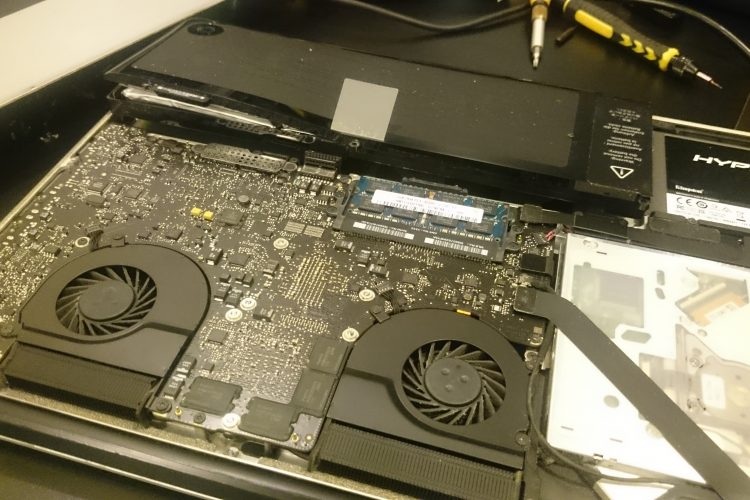
Battery swelling in laptops is a serious issue that can lead to device damage and even personal harm. Let’s break down the causes of this alarming condition.
It’s tempting to leave your laptop plugged in at all times, but this habit can be detrimental. Batteries are designed to handle a certain number of charge cycles. Exceeding this limit can lead to overheating and swelling. As PCMag notes, the chemical reactions between the electrolyte and electrodes can release gases when overcharged, causing the battery to bulge.
Even with rigorous quality checks, a few faulty batteries may slip through. These defects can result in internal heating and swelling, as highlighted by Battery Skills.
A drop or a hard knock can dent the battery casing. This damage can distort the internal structure, leading to a short circuit and swelling when the battery is charged.
Over time, a battery’s internal components degrade. This deterioration can lead to short circuits and overheating, which in turn cause swelling. An older battery is more likely to swell, as it becomes less efficient at managing charge and heat.
Poor heat ventilation, often due to blocked or faulty fans, can lead to excessive temperatures. This accelerates the decomposition of the electrolyte gel, resulting in gas build-up and swelling.
In conclusion, battery swelling can stem from overcharging, manufacturing defects, mechanical damage, aging, and overheating. Recognizing and addressing these factors can help prevent the risk of a swollen battery. Always use the appropriate charger and avoid exposing your laptop to extreme temperatures to maintain battery health.
Catching a swollen battery early can save you a world of trouble. Here’s how to spot the warning signs before they escalate.
A bulging case or a keyboard that seems to float above its usual position is a telltale sign. Digital Trends warns that as the battery swells, it can warp the chassis and other components. This distortion is not just a cosmetic issue; it’s a clear indicator of a swollen battery.
If your laptop doesn’t sit flat on a surface, it’s time to investigate. PCMag highlights that a battery swelling with gases can push against the laptop’s touchpad or keyboard. This pressure can cause them to lift, which you can often see or feel.
If parts of your laptop that used to fit snugly together now show gaps, that’s a red flag. Dell’s guidance on swollen batteries includes uneven seams as a symptom. This misalignment can be subtle, so it pays to be vigilant.
If your laptop’s battery life drops dramatically, it could be a sign of internal trouble. A battery struggling to hold a charge can also be a battery that’s starting to swell.
Many laptops come with built-in tools to check battery health. These can provide early warnings of potential swelling. If you notice any alarming diagnostic results, take action.
In conclusion, early detection involves a mix of visual checks, tactile assessments, and software diagnostics. Keep these tips in mind to catch a swollen battery before it becomes a bigger problem. Remember, if you suspect your battery is swollen, stop using the laptop immediately. It’s better to be safe than sorry.
Ignoring a swollen battery is like overlooking a ticking time bomb. The risks are real and potentially severe. Let’s explore why you should never ignore this issue.
A swollen battery can warp the chassis and other components. This can lead to a malfunctioning keyboard, a distorted touchpad, or even a cracked screen. Such damage not only hinders your laptop’s functionality but can also be costly to repair.
A swollen battery may catch fire or even explode. The Power Facts website emphasizes that puncturing a swollen lithium battery can lead to a dangerous release of energy. This can cause fires, which pose a serious risk to your safety and property.
Swollen batteries contain hazardous materials. If not handled properly, they can leak and contaminate the environment. Digital Trends advises immediate action, suggesting that swollen batteries be removed by professionals and disposed of correctly.
Manufacturers typically cover battery defects, but continued use after swelling can be seen as negligence. This might lead to a voided warranty, leaving you to cover all repair costs.
If a swollen battery causes damage or injury, you could be held liable. Especially if you knowingly ignored the problem and didn’t take the necessary precautions.
In conclusion, the risks of ignoring a swollen battery are too great to overlook. They range from damaging your laptop to endangering your safety. Always take immediate action if you suspect your battery is swollen. It’s not just about device maintenance; it’s about responsible ownership.
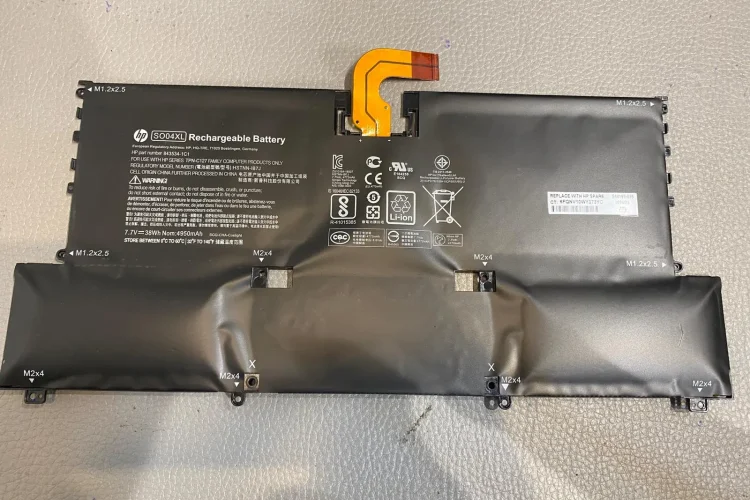
When you suspect your laptop battery is swelling, time is of the essence. Here’s what you need to do, step by step.
Do this as soon as you notice any signs of swelling. It’s crucial to stop all electrical current to the battery.
This includes disconnecting the charging cable. It’s a simple step, but it’s vital for safety.
However, do this only if you’re familiar with your laptop’s design. If you’re not sure, don’t risk it. According to Digital Trends, removing a swollen battery can be dangerous. It’s best left to professionals.
Preferably somewhere cool and away from flammable materials. This reduces the risk of fire if the battery were to rupture.
Don’t try to force it into or out of its compartment. This could puncture the battery and lead to a fire, as noted by The Power Facts.
They have the expertise to safely handle and dispose of swollen batteries. Digital Trends suggests using a fireproof box or vessel for transport if available.
The longer a swollen battery remains in your laptop, the higher the risk. Take action immediately to ensure your safety and the longevity of your device.
In conclusion, if you suspect battery swelling, act fast. Power down, unplug, and seek professional help. These steps are not just precautionary; they’re necessary for your safety.
Preventing a bloated laptop battery is far better than dealing with its consequences. Here are the best practices to keep your battery healthy.
It’s tempting to opt for cheaper alternatives, but they may harm your battery. As Now Micro’s blog advises, the right charger with the proper power output is essential for your device’s health.
Once your battery is fully charged, unplug it. This simple habit can prolong your battery’s life, as per the guidance from Laptop Parts.
Ensure good ventilation and avoid using your laptop on soft surfaces that can block air flow. Overheating is a major cause of battery swelling, so keeping the temperature down is key.
Physical damage from drops or impacts can lead to swelling. Be gentle with your device to avoid internal damage.
If your laptop is old and out of warranty, think about an upgrade. Older batteries are more prone to swelling, as noted by PCMag.
Dell’s safety information stresses the importance of using genuine replacement batteries. This ensures compatibility and reduces the risk of swelling.
In conclusion, proper charging, cooling, handling, and adherence to manufacturer guidelines are crucial. These steps will help you avoid the headache of a swollen battery.
Replacing a swollen battery is a delicate process that should be handled with care. Here’s a step-by-step guide to ensure safety and effectiveness.
Before you proceed, confirm the battery is swollen. Look for a bulging case, a lifted keyboard, or seams that don’t align. As Dell’s guidance on swollen batteries suggests, these physical changes are clear indicators.
Immediately turn off your laptop. Unplug it from any power sources. This step is crucial to prevent any further electrical current from flowing into the battery.
If you’re not experienced with removing laptop batteries, seek professional help. Digital Trends strongly advises against DIY removal of swollen batteries due to the risks involved.
Handle the swollen battery with caution. Avoid applying pressure or puncturing it, as this could lead to a hazardous situation. Dell’s safety information provides detailed handling guidelines.
Do not throw the swollen battery in the trash. Take it to a local e-waste recycling center that can safely process it. This is important for environmental safety and is often required by law.
Choose a genuine, compatible replacement battery. This ensures the best performance and reduces the risk of future swelling. Dell emphasizes the importance of using batteries purchased from reputable sources.
Have the new battery installed by a professional, or follow the manufacturer’s instructions if you’re doing it yourself. Ensure that the battery is properly seated and connected.
After replacing the battery, monitor your laptop closely for the first few charges. This helps ensure that the new battery is functioning correctly and not showing signs of swelling.
Replacing a swollen battery involves recognizing the problem, seeking professional help, and using genuine replacement parts. By following these steps, you can safely and effectively restore your laptop’s power source.
Navigating the legal and warranty aspects of a swollen laptop battery is crucial. Here’s what you need to know to protect yourself and your investment.
Most laptop batteries come with a 1-year warranty. This coverage typically includes defects in materials and workmanship. However, it’s important to read the fine print. Battery Skills notes that issues like diminished capacity due to misuse or improper maintenance are not covered. If your battery swells within the warranty period, it’s often not considered a manufacturing defect. Therefore, it may not be covered.
If a swollen battery causes damage or injury, you could be held responsible. This is especially true if you continued to use the battery despite knowing it was swollen. Always prioritize safety over convenience.
Should you face a battery issue, contact the manufacturer or authorized dealer if it’s under warranty. As per Battery Skills, they will assess the problem. If it’s due to manufacturing defects, they’ll likely repair or replace it at no charge. Remember, tampering with the battery may void the warranty.
Dell offers a standard 1-year warranty, with an option to extend to 3 years. The Dell Knowledge Base article explains that the warranty is linked to the laptop’s invoice date. They also stress the importance of using compatible Dell batteries purchased from Dell for safety and performance reasons.
Always check your laptop’s warranty and understand what is covered. If you encounter a swollen battery, seek professional help and do not attempt to fix it yourself. This can prevent voiding your warranty and ensure your safety.
Answer: A laptop battery can bloat due to several reasons, including overcharging, excessive heat, aging, manufacturing defects, or damage. Over time, these factors can lead to a breakdown of the battery cells and the release of gases, causing the battery to expand.
Answer: Signs of a bloated battery include a visibly swollen or bulging battery case, the laptop case not closing properly, the keyboard or touchpad being pushed up, or the device not sitting flat on a surface. If you notice any of these signs, it’s important to stop using the laptop immediately and consult a professional.
Answer: No, it’s not safe. A bloated battery can pose a fire risk and may also cause further damage to your laptop. It’s best to power down the device, remove the battery if possible, and seek professional assistance.
Answer: A bloated battery cannot be repaired and must be replaced. Continuing to use a bloated battery can be dangerous, and attempting to repair it can lead to injury or further damage to the laptop.
Answer: A bloated laptop battery should be disposed of properly at an electronics recycling facility or through a battery recycling program. It’s important not to throw it in the trash, as it contains hazardous materials that can harm the environment.
If you’re in Singapore and your laptop battery has become bloated, it’s crucial to address the issue promptly. For a reliable repair service, Volta PC Upgrade & Repair stands out as a commendable option. They specialize in laptop repair services, including battery replacement. With a strong reputation backed by numerous positive reviews, Volta PC Upgrade & Repair ensures your device is handled professionally.
Address:
Tai Seng Branch: 8 Burn Road #01-04, Trivex, Singapore 369977
Jurong Branch: Blk 132 #01-279C, Jurong Gateway Road, Singapore 6001324

12 Clear Signs Your Gaming Laptop Needs Repair (Before It Gets Worse) Gaming laptops are built for speed and heavy workloads. But even top-tier machines
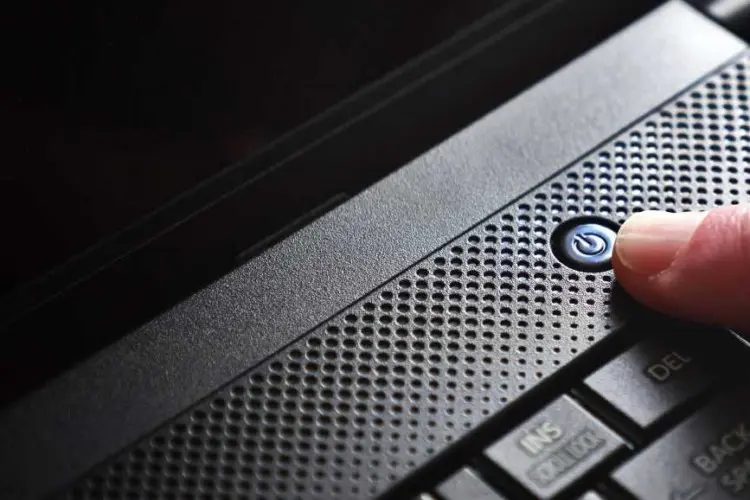
How to Recover Data from a Laptop That Won’t Boot Quick Summary: How to Recover Data from a Laptop That Won’t Boot If your laptop

Best Data Recovery in Singapore (2025 Guide) Losing important files from work projects to cherished photos can be stressful. Whether it’s a hard drive crash,